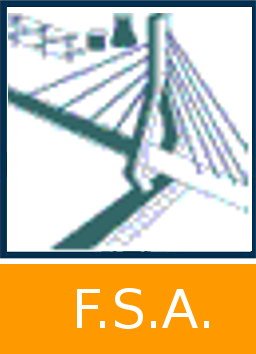Vu, Minh Tuan 
Promotor(s) : Lungu, Adrian
Date of defense : 2012 • Permalink : http://hdl.handle.net/2268.2/6104
Details
| Title : | Numerical Simulation of the 3D Flow around Junctures |
| Author : | Vu, Minh Tuan 
|
| Date of defense : | 2012 |
| Advisor(s) : | Lungu, Adrian |
| Committee's member(s) : | Ferrant, Pierre |
| Language : | English |
| Number of pages : | 102 |
| Discipline(s) : | Engineering, computing & technology > Civil engineering |
| Target public : | Researchers Professionals of domain Student |
| Institution(s) : | Université de Liège, Liège, Belgique |
| Degree: | Master de spécialisation en construction navale |
| Faculty: | Master thesis of the Faculté des Sciences appliquées |
Abstract
[en] When an oncoming boundary layer flow encounters an appendage fixed on the plate, the flow separates in front of the body due to the blocking effect. The separated flow forms several vortices around the body, which are called horseshoe vortices because their top view looks like a horseshoe. The flow is completely 3D and becomes complicated as the horseshoe vortex interacts with the boundary layer developed on the body surface. This convoluted three-dimensional flow has been called a juncture flow. Juncture flow can affect the lift and stability/control characteristics of appendages through the generation of horseshoe vortices from these appendages. In spite of its engineering importance, there is no established method for estimating the appendage resistance or wake characteristics since the detailed mechanism of the juncture flow is not fully understood. Although some systematic experimental studies have been performed through conventional tests, the estimation of the resistance is hampered by the uncertainty associated with the scale effect. The flow complexity is due to the number of vortices originating upstream of the strut. These vortices result from the separation of the boundary layer due to the adverse pressure gradient in front of the strut. Creation of the vortex system in front of the circular cylinder is clearly seen in the famous photograph taken by Sutton where an array of vortices is visualized with the injection of smoke. Sutton's photograph has helped clarify the horseshoe vortex system. The number of vortices increases as the Reynolds number is increased or the thickness of the oncoming boundary layer decreases. Although many experimental studies have been conducted to understand the structure of the horseshoe vortex system, the precise flow topology is still controversial due to the lack of resolution in experimental data. However, rapid advances in computing technology have cleared the road to simulate the flow by solving the RANS equations.
The master thesis focuses on the numerical simulation of 3D flow around junctures, in which the unsteady nature of the flow represents the main point of interest. Various geometries of the juncture are investigated to grasp a better understanding of the phenomena and develop proper modeling techniques. Besides, the study also focuses on the free-surface influence on the overall hydrodynamic field around the juncture.
In the first part of the thesis, the theoretical aspects of the numerical approach are briefly described. The governing equations and the initial and boundary conditions are presented. In addition, some quantities which are used to estimate and evaluate the solutions of the governing equations are also mentioned. Emphasis is put on the turbulence treatment. A comparison between different turbulence models is performed to motivate the choice for the Spalart-Allmaras model, which proved to be the most suitable one for this work. The validation of the computed solution is achieved through comparisons with the experimental data provided by the literature.
The second part of the work discusses the 3D flow around a circular cylinder mounted on a plate. The characteristics of the flow around a circular cylinder such as Reynolds and Strouhal numbers, vortex shedding, drag and lift coefficients are also pointed out specifically. In these cases, the free surface effect is not taken into account. The shape of plate is changed ranging from the flat one to a concave or a convex one. For each geometric configuration of the plate, the circular cylinder will be inclined with various aspect angles (10°, 20° and 30°) longitudinally and laterally. All simulation cases are done for two different Reynolds numbers of 3900, and 1 million, respectively.
In the third part, the unsteady simulation is performed at Reynolds number of 3,900. Only the circular cylinder mounted on the convex plate and inclined laterally is studied and the numerical solution is compared with the cases of the steady flow corresponding case. Besides, once again, these simulations do not take into account the effect of free surface. The mechanism of vortex shedding will be unveiled by the results of this simulation.
Finally, several conclusions outline the achievements and findings of the work, drawing out the
potential directions for further studies.
File(s)
Document(s)
Cite this master thesis
The University of Liège does not guarantee the scientific quality of these students' works or the accuracy of all the information they contain.


 Master Thesis Online
Master Thesis Online





